Photo
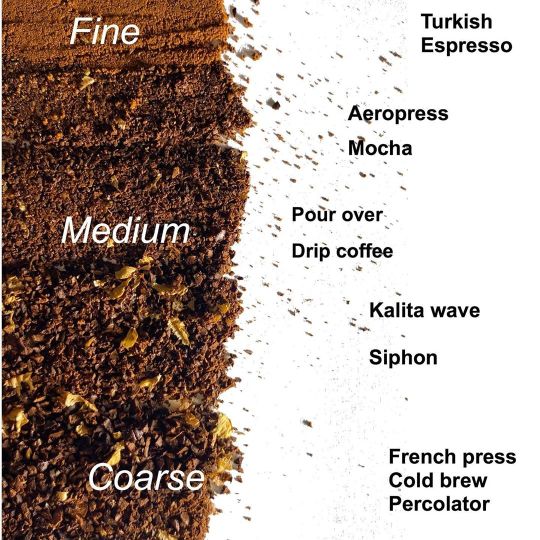
Now in my opinion the most important thing about any coffee is your grind, the farmer can grow the best tasting coffee in the world and the roaster can perform his art at the highest levels but if you’re grind is not consistent in relation with your extraction of your coffee , your coffee will be horrible. The extraction rate of coffee grounds increases with a larger surface area. To increase surface area, grind the coffee finer. The higher the extraction rate, the less contact time is needed. A finer grind can reduce the flow rate of water, increasing the contact time. When making coffee, our biggest goal is to achieve a controlled extraction. The final coffee flavor will depend on how many compounds are extracted from those roasted beans into our brew – something that is a delicate balance of water: coffee ratio, brew time, water temperature, grind size. The whole purpose of grinding our coffee beans is to increase the surface area coming into contact with water. And the finer or coarser the grind, the more or less quickly water can pass through it – affecting brew time as well as extraction efficiency. A coarser grind has looser particles which, in turn, will allow water to move between them more quickly. The combination of less surface area and a shorter brew time (unless it’s immersion brewing) means that less extraction will be taking place. On the other hand, a finer grind has particles that are packed closer together. This means water takes longer to pass through the grinds and that there’s more surface area – leading to greater extraction. Is your coffee mouth-puckeringly bitter (burned)? Your grind size is too coarse – go finer. And if it’s a acidic brew(sour)? You have the opposite issue, try grinding coarser. But there are several factors that help determine the exact grind size that’s best. Let’s take a look at them. WHAT AFFECTS THE IDEAL GRIND SIZE? First of all, personal preferences will always determine the ideal coffee recipe. So too will the coffee you’re brewing: depending on the origin, variety, processing method, roast profile, and more. So play around and discover your happy place. #caffeinezone #coffeeeducation #coffee (at Pretoria, South Africa) https://www.instagram.com/p/B_uTvYqhPvY/?igshid=5r18zjsfrske
6 notes
·
View notes
Video
instagram
Part of the coffee is beauty is it’s ambiguity; It’s not roasted to an exact recipe of aldehydes, assets, sugars, carbonyls, Caramels, carotenoids And other aromatic molecules in a perfect digital formula of saturation, contrast and brightness. Roasters are more like impressionist painters, Where are the artistry maybe Vague, imbalanced and imprecise,But the resulting composition as a whole can depict a richer,More emotional story through its imperfections. The modern coffee roaster a present and then 500 years of acquired knowledge improvements in design and he became necessary once it had been established what was wrong with the equipment available at the time. A better design meant a better product which would command a higher price for the machine and the coffee it produced. Bigger designs were only needed once casual home roasters excepted that commercially roasted coffee was a higher standard and more consistent than the stuff they were making on the fireplace. Looking through the evolution of the roaster there are three fundamental issues that the inventors have fought with. First is the even distribution of heat through the coffee Bean mass, which we know gives a constant and better quality roast. Second is the speeding up of the process of loading and unloading the roaster which increasesAnd decreases labour cost. Third is the ability to monitor the roast by way of visual, or physical access to the coffee beens, Which result in clear and precision and ultimate a better product. Now in simple terms a Coffee roasters work is like art they have to dry out the been to the perfect temperature so that the acidity flavour of the Coffee is just enough to taste nice then catch and burn the sugar to the outer layers of the coffee Bean and caramelise them with just enough bitterness to not ruin your next cup. So may we appreciate the perfect artwork of every single coffee roaster out there. @skylinecoffeeza @roastofearth.coffee @roastmagazine @rossocoffeeroasters @roastrepublic @bluebirdcoffeeroastery @genioroasters @terbodorecoffee @cupocafecoffeebar @ultimatewaterza @wayne_burrows @winston_douglas (at Pretoria, South Africa) https://www.instagram.com/p/B_o5770BpCo/?igshid=mhwz66mve03h
1 note
·
View note
Photo
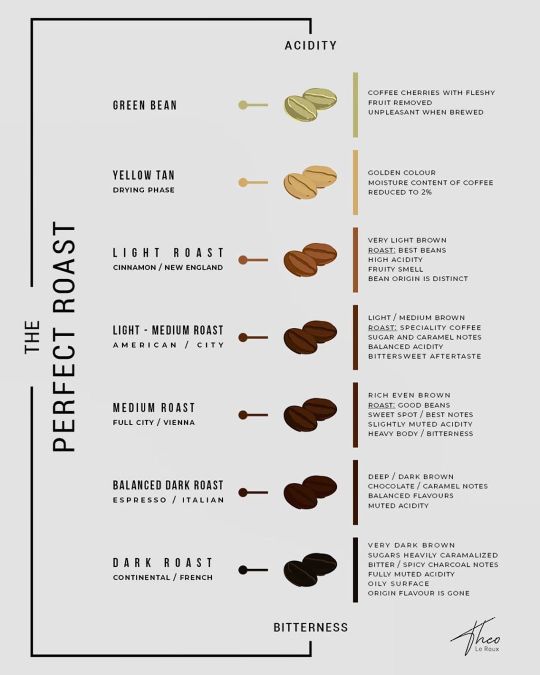
The skill of a coffee roaster Coffee roasters will buy coffee based on a number of factors first being flavour of course one of the most important and this will in part be a reflection of how and when the coffee was picked, processed, graded, packaged and imported and how these factors balance with price. Now it seems like an easy job but once the coffee roaster puts the coffee into the spinning drum it comes down to phenomenal talent to make sure that only the best comes out once they are done. To catch and burn the sugars at the perfect point to the bean and make sure that you get the best tasting Cup of coffee that you've had for the day. (at Pretoria, South Africa) https://www.instagram.com/p/B_caACoDDmb/?igshid=1mh0vb5nvqs4w
1 note
·
View note
Photo
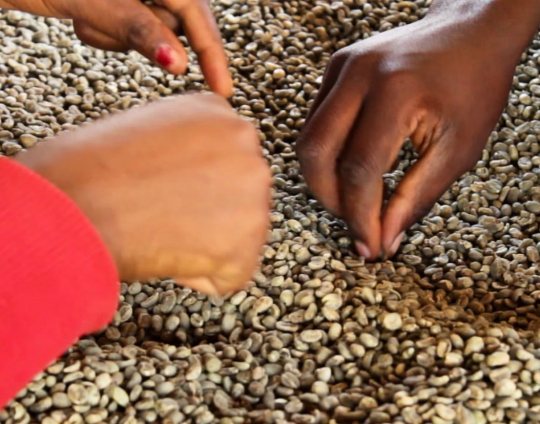
Anatomy of the row coffee bean or cherry. (drupe) Inside the coffee fruit or cherry are the flat-sided kernels , Which are technically seeds, but are more commonly known as beans. In each cherry, there are usually two beans, But sometimes and especially on trees grown in soil containing low quantities of the micro-nutrition Boron - there is only one, which is known as a peaberry. Green or unroasted coffee beans, like most seeds , are compact stores of carbohydrates, proteins, acids and fats - basically everything the plant needs to grow and mature. Carbohydrates provide the energy the bean would otherwise use, and makes up approximately 50% of the total mass of the processed green bean. Approximately 10 to 20% of that carbohydrate is sucrose, which will go on to provide sweetness, bittersweet caramels and even acidity later on when roasted. There's a good store of fats and proteins to The latter of which will react with sugar during roasting to create the familiar browned appearance and corresponding flavours that we know and love. Caffeine (A type of alkaloid) is naturally present at the level of 1 to 2%, plus there's the lesser-known alkaloid, trigonelline which makes up approximately 1% of the beans dry weight. Trigonelline contribute a great deal of complex better notes to the coffee through the chemical effect of roasting, including niacin (vitamin B3). Finally there's a whole host of organic acids that give us both acidity and bitterness, most important among these are chlorogenic acid (CGA) which makes up around 8% of the dry mass of the green bean. #coffee #coffeeeducation #coffeelover #coffeeaddict @skylinecoffeeza @cupocafecoffeebar @cupofexcellence @wayne_burrows @shaunthecoffeeguy @jabucoffee @jabuthe_b @waynevermeulen @the_caffeine_guy @stevobarista @coffeechocexpo (at Pretoria, South Africa) https://www.instagram.com/p/B_LW9nwBYHz/?igshid=1r1hwp6vxp7i7
0 notes
Photo
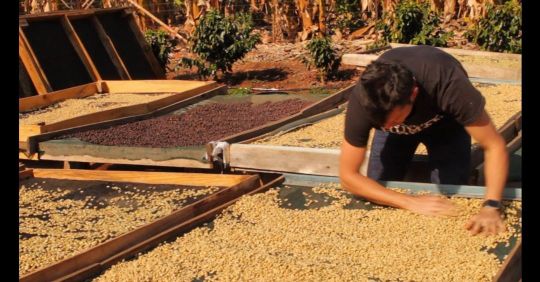
Drying coffee. Whether undergoing wet processing, the pulped natural or natural method, eventually the coffee must experience a drying process that reduces the moisture content of the bean from 40% down to around 10 to 12%. This is a process that requires constant attention, since the warm moist piles of beans need to be regularly turned to avoid the development of mould and bacteria. Airflow, temperature, humidity and light must all be taken into account. The three different environments to dry coffee is patios, raised beds and or mechanical dryers. Raised beds are also known as Africa drying beds and Is becoming increasingly more popular around the world constructed from wood and thin mesh screens, they look a lot like very long silkscreens or hammocks, that sit at waist height. The advantage of the bed is the improved airflow that it offers, meaning that the coffee does not need to be turned as regularly. Some beds in countries such as Columbia "where the weather is changeable" also have plastic covers that protect the coffee from rain, but still allow sufficient airflow. In Nicaragua, Sumatra and Indonesia it is common to see coffee dried on tarpaulin (A very low cost solution) It allows airflow yet protect from rain. This process can endure anything from 12 days to 70 days from a wet Cherry to a dry bean. #coffeeeducation #coffee #coffeelover #coffeetime #coffeeaddict @stevobarista @dodgybarista @wayne_burrows @waynevermeulen @waytocoffee (at Pretoria, South Africa) https://www.instagram.com/p/B-9eMbVhPvm/?igshid=9bv7ejsiy6lc
0 notes
Video
instagram
Processing coffee The way coffee is processed before shipping set the precedent for the style of coffee that will eventually leave the roaster and can have a dramatic effect on the resulting cup. It has become an increasingly important part of how it is described when sold. It would be a mistake to believe that coffee producers have flavour mind when they choose their processing style. A very small percentage of them do, but for most producers the goal is to ensure the processing causes the least possible defects and causes no drop in quality, and thus the monetary value of the coffee. Coffee beans start with a moisture content of around 60% , And should be dried to around 11 to 12% to insure they do not rot while waiting to be sold. From the day a coffee Cherry is picked from the tree until it is sold could be anything between 8 to 12 months. #coffee #coffeeeducation #coffeeaddict @jabucoffee @jabuthe_b @pausecoffeeroastery @wayne_burrows @wayne_obie @waynevermeulen @ultimatewaterza @winston_douglas @wingscoffeeroastersoverberg (at Pretoria, South Africa) https://www.instagram.com/p/B-zx_b9hjh0/?igshid=132s6jlhuytgl
0 notes
Photo
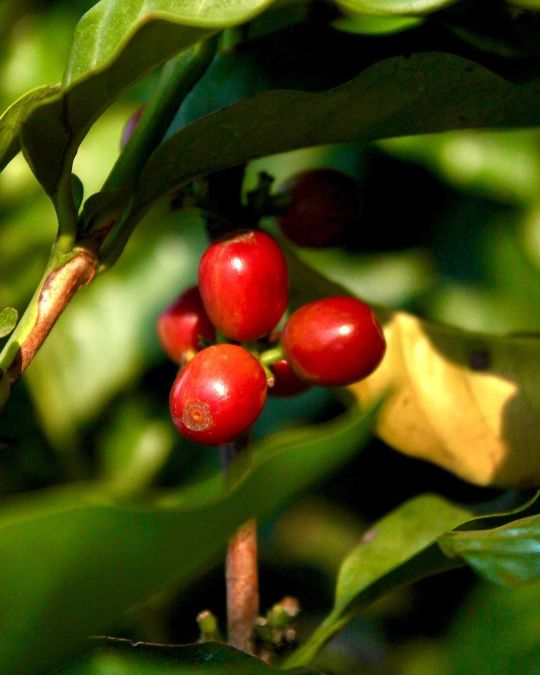
The size of the fruit varies between varieties of coffee, but on the whole they are the size of a small grape. Unlike grapes most of the volume of the fruit is provided by a central seat, although there is a thin layer of fruit flesh under the skin. All cherries start out green and develop deeper colours as the fruit matures. The skin is usually a deep red wine ripe, though some trees have yellow fruit and occasionally a cross between a yellow fruiting tree and a red fruiting tree will yield orange fruits. While fruit colour isn't thought to influence yield, yellow fruiting trees have often been avoided as it is harder to determine when the fruit is ripe. Red fruit starts green, goes through a yellow stage and then turns red. This makes ripeness much easier to identify when Coffee is being picked by hand. Ripeness is tied to the quantity of sugar in the fruit, which is vitally important when trying to grow delicious coffee. Generally speaking the more sugar in the fruit the better. However different producers harvest the cherries at different stages of ripeness. Some believe that a mixture of cherries at the different stages of ripeness can add complexity to the coffee, though all the cherries should be properly ripe, and none of them over ripe as they eventually develop an unpleasant flavour. #coffee #coffeelover #coffeetime #coffeeaddict #coffeeeducation @stevobarista @dodgybarista @carimali_1919 @specialtycoffeeassociation @cupocafecoffeebar @skylinecoffeeza @winston_douglas @wingscoffeeroastersoverberg @wayne_burrows @wayne_obie @waynevermeulen @mini_zeus_ @morricosa @cosmosenrique (at Pretoria, South Africa) https://www.instagram.com/p/B-uCWGbhBSl/?igshid=12n34y40d8gxc
0 notes
Photo
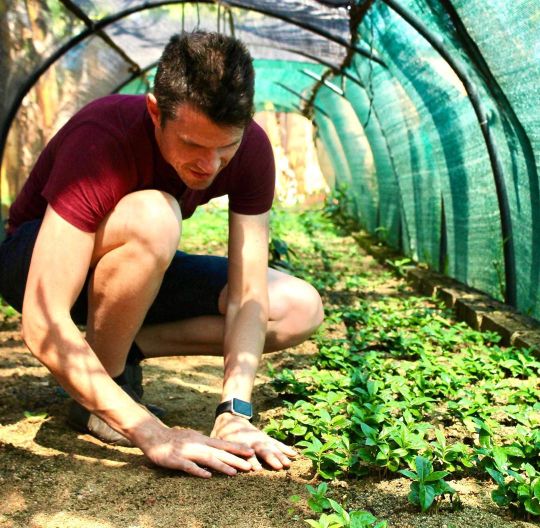
One of the greatest feeling in the world is seeing the starting point of something to experience it’s origin and to journey with it to its end it is amazing to taste the flavour of its essence when you’ve been there the whole journey, My wish is for everyone to experience the life of coffee...☕️ (at Pretoria, South Africa) https://www.instagram.com/p/B-orLF7hdH7/?igshid=e0fng05ucs0x
0 notes
Photo

Coffee is A recipe of water mixed with grinded roasted seeds of a fleshy fruit that grows on a tree. https://www.instagram.com/p/B-mkhDih9Pr/?igshid=kv3q5xwv466u
0 notes
Photo
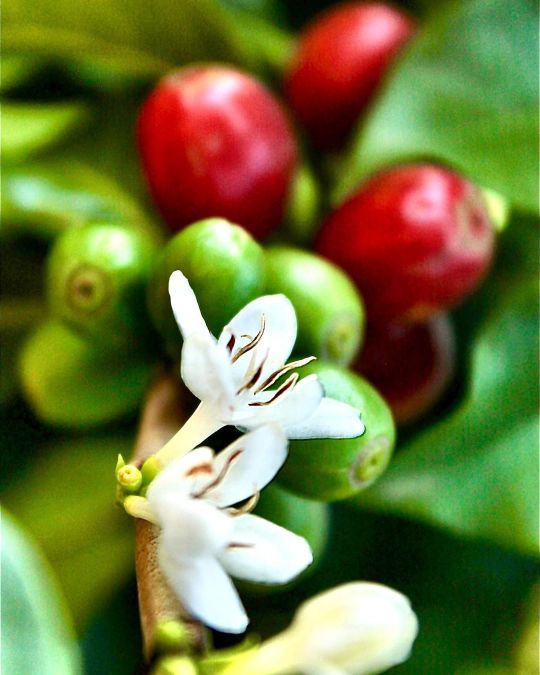
Coffee blossoms. Most coffee trees have one main harvest per year, though the trees in some countries have a second harvest, which is usually smaller and often of a slightly lower quality. The cycle is first triggered by a bit of a drought and then by a prolonged period of rainfall. This causes the tree to bloom, producing lots of white blossom flowers with a strong scent that is reminiscent of Jasmine. Insects can pollinate these flowers, although Arabica is able to Self pollinate, meaning that unless they are knocked off the tree by adverse weather, The flowers will always yield fruit. It takes up to 9 months until the fruits are ready to harvest. Unfortunately coffee cherries do not ripen at once. The coffee producers have a difficult choice between harvesting all the fruits from each tree at the same time and harvesting a certain quantity of unripe or over ripe coffee cherries in the harvest, or paying pickers to do multiple passes of the same trees so each cherry is harvested when it is perfectly ripe. #coffee #coffeeshop #coffeepeople #coffeetrees @shaunthecoffeeguy @cupocafecoffeebar @morricosa @coffeecupsoftheworld @skylinecoffeeza @jabucoffee @jabuthe_b @i_coffeeworks @coffeechocexpo @wayne_obie @wcoffeeevents @wcoffeeresearch @wayne_burrows @waynevermeulen (at Pretoria, South Africa) https://www.instagram.com/p/B-T-ImPDlYc/?igshid=2yn2s4twd14
0 notes
Photo
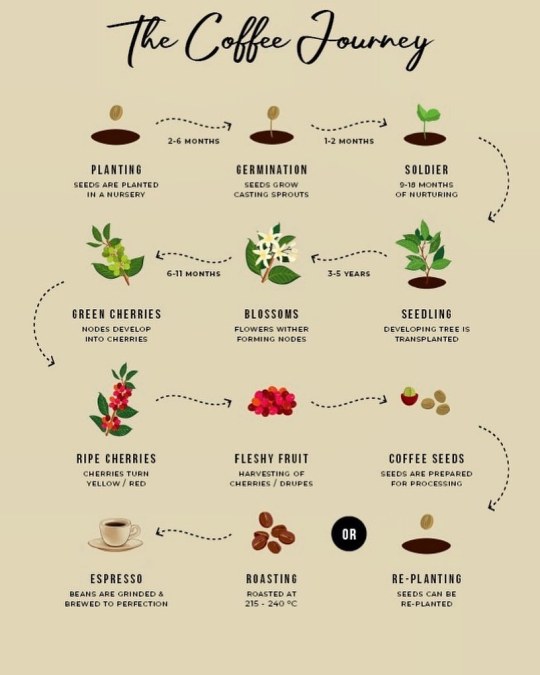
Growing coffee is not a simple task. The coffee trees demand a lot of care and attention before they repay you with coffee beans. And when they do, each tree only produces between 3-5 kg of coffee beans per year, depending on climate, soil conditions and other factors. In other words, you need a lot of trees in your plantation in order to make a living. You start out by planting a seed. Within 4 to 12 weeks you will have a seedling. You then need to tend the seedling, making sure the soil remains moist, and that there is not too much direct sunlight if not in a tropical area a coffee tree wants 40% sunlight per day. Within 9 to 18 months the coffee tree will be about 300-500mm tall. But you'll need to wait 3-5 years before the tree bears fruit. And 6 years before the tree is mature and producing fully. Each tree will keep producing for about 20 to 25 years. (at Pretoria, South Africa) https://www.instagram.com/p/B-NFlmQpChE/?igshid=1xo9qv1gce21i
0 notes
Photo
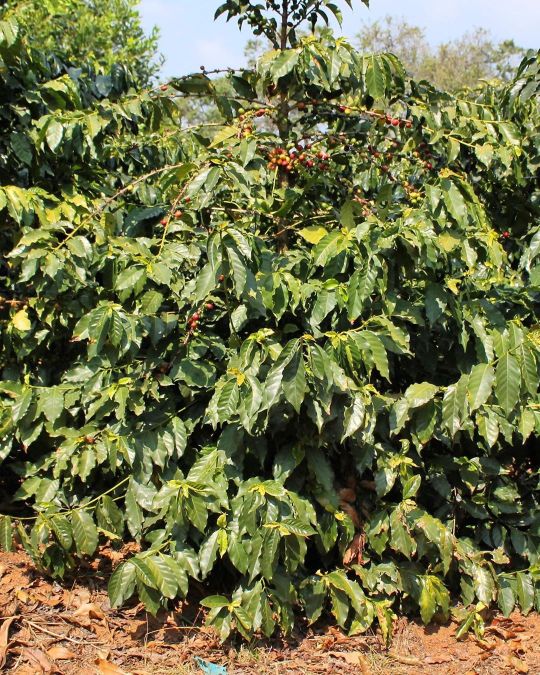
A average Coffee Tree in the world takes between 4 to 7 years to give a quality harvest to the coffee farmer. A single Arabica tree can produce between 3 -5 kg of ripe coffee cherries in a single season, if all the elements of climate and care come together nicely. The higher end of that scale roughly equates to 1 kg of roasted beans, or 110 single espressos. Labour costs vary from country to country, but in some Central American countries, a good harvester might be capable of picking 80 kg of fruit in a single day, which would earn them approximately $10. #coffee #coffeelover #coffeetime #coffeeshop @coffeemonster_app @cupocafecoffeebar @wayne_burrows @jabucoffee @jabuthe_b @cosimissimo @cosmosenrique @morricosa @beantherecoffee (at Pretoria, South Africa) https://www.instagram.com/p/B-FdRxNpH1M/?igshid=1plw1mm1ih3vi
0 notes
Video
instagram
Most established coffee farms have a nursery in which to raise seedlings before planting them out on the farm for production. The coffee beans are first planted in rich soil, and will soon germinate. The bean itself is then lifted out of the ground by the developing shoot, And at this stage they are often called “soldiers”. They look strangely like a roasted coffee bean has been attached to the top of A thin green stem. Not long after this, the bean burst open to reveal the first leaves. Coffee plants grow quickly and after 6 to 12 months they can be moved from the nursery into production. Coffee growing requires the investment of not only money, but also time. A coffee farmer will usually have to wait three years for a newly planted tree to fruit properly. #coffee #coffeelover #coffeetime #coffeeshop #coffeeeducation #coffeetree #coffeetrees #coffeeseedling @shaunthecoffeeguy @sa_coffee_association @thecoffeemag @coffeequip @skylinecoffeeza @cupocafecoffeebar @specialtycoffeeassociation @specialty_coffee_exchange @wcoffeeevents @wayne_burrows @liquidconcepts @milklabsouthafrica @mini_zeus_ @zappertm (at Pretoria, South Africa) https://www.instagram.com/p/B99tQvLJ-mq/?igshid=wy4uh6uu4urf
0 notes
Video
instagram
Tasting a lot of coffee is the only way to really teach your Pallete what is your favorite flavor that you enjoy in your cup. (at Pretoria, South Africa) https://www.instagram.com/p/B91bo7Np1Rd/?igshid=vam72oudnwrq
0 notes
Photo
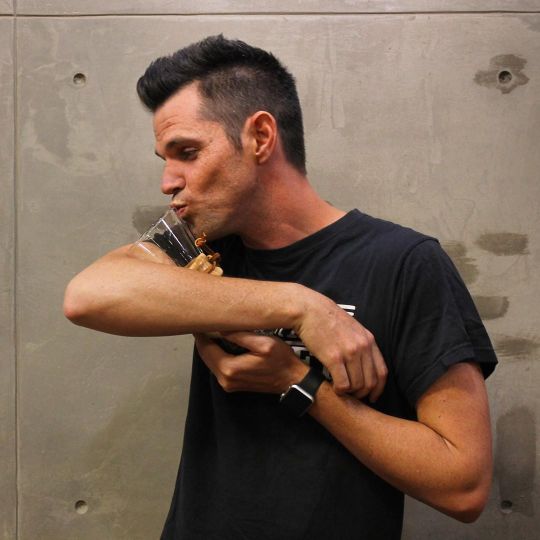
Testing something new every single day is something that excites me. If you love what you do every day is like a holiday. I hope you find what you love that you may do it every day of your life. Have more coffee... (at Pretoria, South Africa) https://www.instagram.com/p/B81rCGApXaY/?igshid=fdc93lfbbkg4
0 notes
Video
instagram
Happy to be able to relax again for a few sec and have a cuppa Joe ... (at CupoCafe - Coffee Bar) https://www.instagram.com/p/B8xr4lFJ7sF/?igshid=ww1z7peci16g
0 notes
Photo

They say it takes all 4 but there is always more behind the scenes than what meets the eye... #dollypartonchallenge🚨😍👏🏻 #dollypartonchallenge #dollypartonmemechallenge (at Pretoria, South Africa) https://www.instagram.com/p/B71i-YjJj4D/?igshid=9j8tqmyws0wo
0 notes